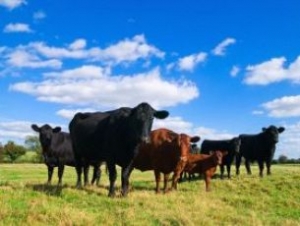Economic - Markets
CME: Fed Cattle Weights Drift Lower in December

Our gratitude goes to all the USDA people that for the last month have been going to work each day and have yet to get a paycheck. Sure, they will get their due when the poker donkeys in Washington finally tire of all this madness.
But in the meantime there are families out there that have to pay bills and people going to work each day (and many others stuck at home in limbo), unable to cover expenses. For us this is not a political issue, it is a human one. We just want to say thank you to all those folks.
Now back to the weather market affecting cattle. With the first storm already behind us, market participants are looking at the potential for snowfall accumulation from the second one, which is expected to dump snow across Midwest and Northeast between Friday and Sunday.
Some of the forecasts we have seen call for up to a foot of snow. Getting snow during this time of year is not particularly surprising. Feedlots are also used to handling snow and cattle generally are adept at dealing with it.
However, what makes the situation particularly difficult for both people and animals during this time of year are the wild swings in temperature. Going from extreme cold and snow to a relatively balmy stretch in late Dec/early Jan significantly affected feedlot conditions.
The new snow from this week is expected to add to the misery already in place. The weight chart below tells the story. Fed cattle weights (note these are average steer/heifer weights) drifted lower in December.

After a brief increase following the short holiday weeks, weights have moved lower once again. According to the latest USDA weekly comprehensive cattle report, average fed cattle weights for the week ending 12 January were 865 pounds/dressed carcass, down 6 pounds from the previous week and down 17 pounds (-2 percent) compared to a year ago.
The combination of higher December marketings and poor weather conditions has allowed feedlots to become more current. While we do not have actual slaughter data from USDA-NASS for the second half of December, our current estimate is that December fed cattle slaughter was 1.1 percent higher than a year ago and this is the number we are using in our estimate of feedlot marketings.
If we are right, the ratio of December marketings vs. the +90day cattle inventory in December was around 31.3 percent, lower than 34.5 percent we observed last year and 36.2 percent two years prior. In the short term, however, the lower marketing rate has not had much impact on fed cattle prices, which continue to grind higher.

Packers are short bought, having less cattle purchased on a forward basis than in the last three years. Additionally, prices for middle meats continue to hold up quite well and as long as packers have a home for middle meats they will go and find cattle. One last piece with regard to currentness is the decline in the number of poor yielding animals coming to market.
In December, 13.6 percent of cattle graded were yield grade 4 or 5, lower than the 14.4 percent we saw last year and 13.9 percent five year average.






















